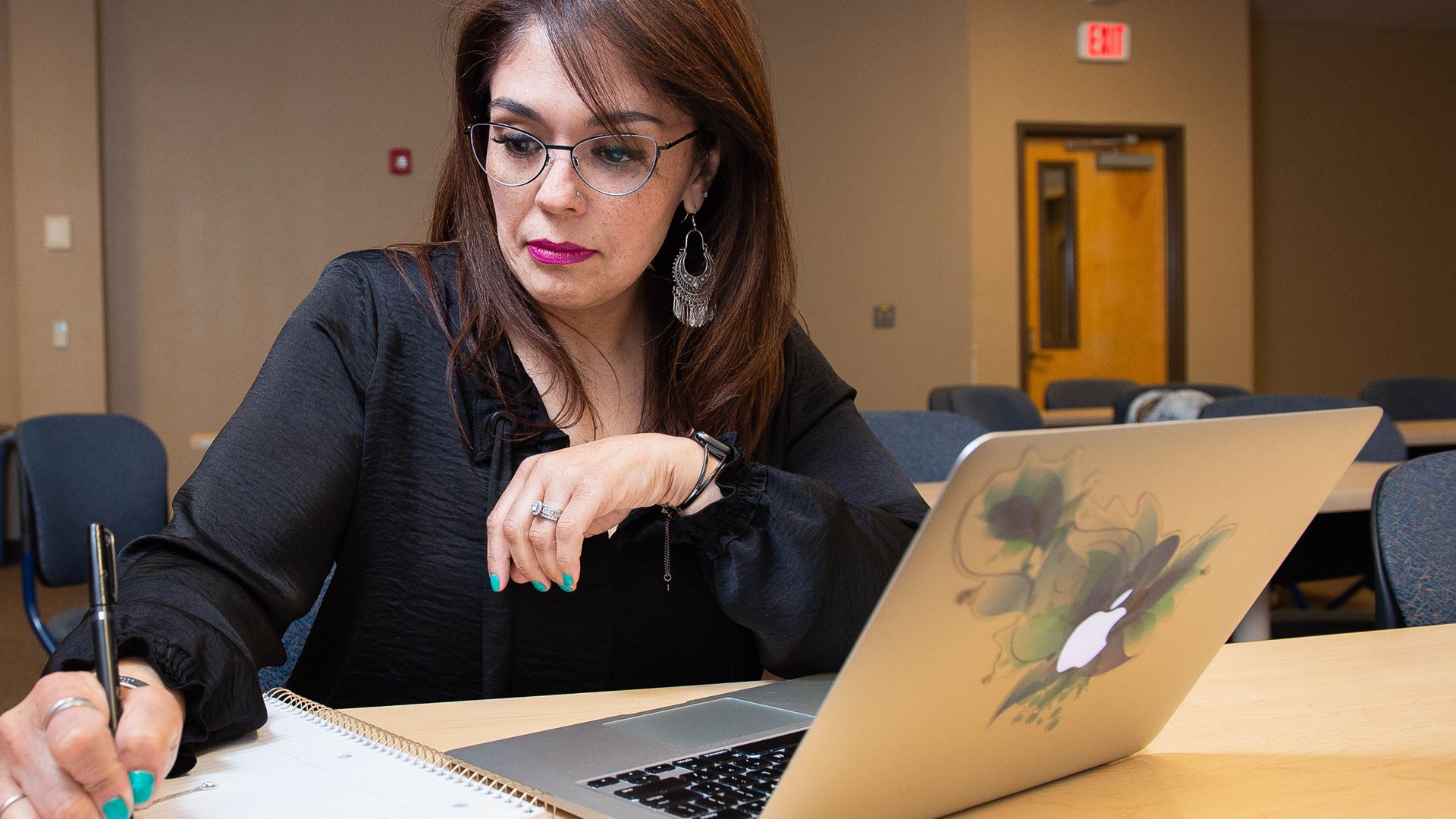When New Mexico State University resumes classes March 30 following a two-week spring break, course instruction will be an online format for the remainder of the spring 2020 semester.
A major resource for faculty and students during the transition in instruction formats due to the COVID-19 outbreak is NMSU’s Instructional Innovation and Quality. The IIQ unit includes Academic Technology, Distance Education, Instructional Media Services and the Online Course Improvement Program. Those units support and specialize in delivering education via non-traditional formats.
“Our NMSU community is working now in a high-pressure, rapidly changing situation, but our paramount interests are keeping our community safe and healthy, and ensuring that our students can complete their academic programs on time,” Provost Carol Parker said. “Our faculty and staff have done a tremendous job of collaborating, sharing ideas and supporting each other through this process. I admire their resilience and their flexibility as we navigate these changes.”
Susie Bussmann, OCIP director, credits the IIQ group with providing the foundation for NMSU’s online instruction – particularly the Academic Technology staff who manages Canvas, the learning management system used at NMSU.
“They have been at the forefront making sure the infrastructure is happening, because without that you cannot take stuff online. They are the first line of defense for a lot of faculty,” Bussmann said.
Julia Parra, coordinator for Learning Design & Technology in the College of Education’s School of Teacher Preparation, Administration and Leadership, who has taught online at NMSU since 2001, is a faculty member helping colleagues who may not have experience in online instruction. She said a major concern for faculty is how to ensure everyone has access to the digital, online and telework resources needed for success.
“We have to be careful with our expectations,” she said. “We need to be compassionate, communicative and creative.”
Bussmann acknowledges the change in formats could be a shock to some faculty and students. While she doesn’t have exact figures, she estimates 85 percent of faculty members have used Canvas to some degree.
“We’re here to help and working online, so we invite them to come join us. We want them to be as prepared as possible, but we have to hear from them first to know how we can help,” Bussmann said. “We know there is a lot of faculty-to-faculty help happening.”
OCIP has posted a “keep teaching” webpage that provides tips and resources for instructors at https://ocip.nmsu.edu/keep-teaching/.
Bussmann echoed that managing expectations will be important.
“They are not expecting faculty who are lost in this environment to go from 0 to 100 miles per hour,” she said. “It’s more like if you can get up to 5 or 10 miles per hour in the online environment because you can log-in, have your syllabus and your course content in there and your assignments set up so the gradebook is happening, so you have that channel of assignment submission open with students, and they get feedback from you, that is a major ask.”
IIQ staff and members of the Teaching Academy are offering online open labs and online consulting for any questions from 8:30 to 11:30 a.m. and 1:30 to 4:30 p.m. through Friday, March 27. The open lab Zoom meetings can be accessed at https://nmsu.zoom.us/my/nmsuacademictech. Also, Academic Technology has a recorded Canvas workshop series available at https://learning.nmsu.edu/recorded-workshops/.
Bussmann recommends faculty focus on preparing for the first two to three weeks following the break.
“That way they can hit the ground running with their students,” she said. “They are still going to have issues, but at least they are aren’t going to be trying to build the plane while they are flying it. They will have built some of the plane.”

